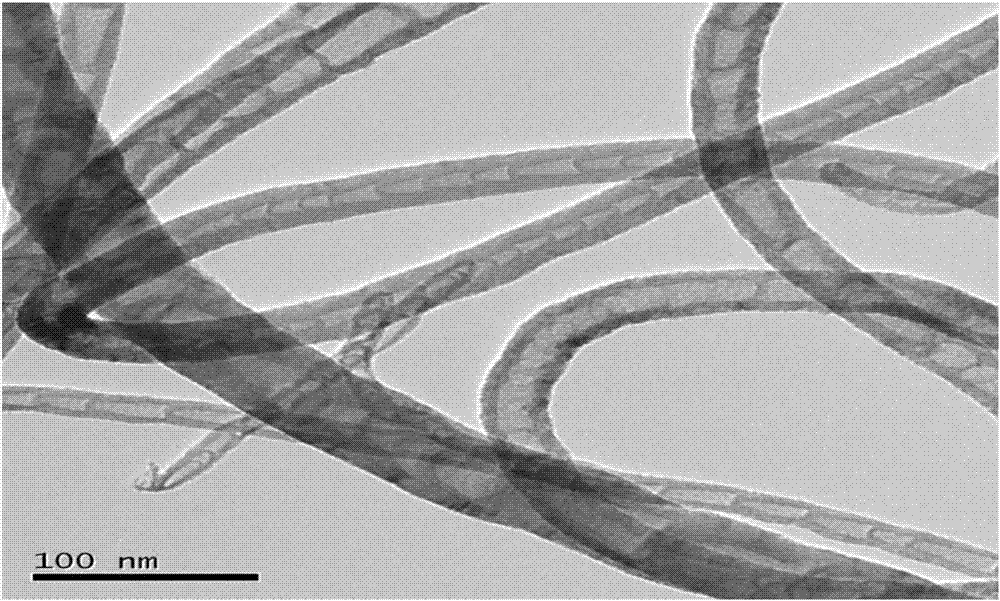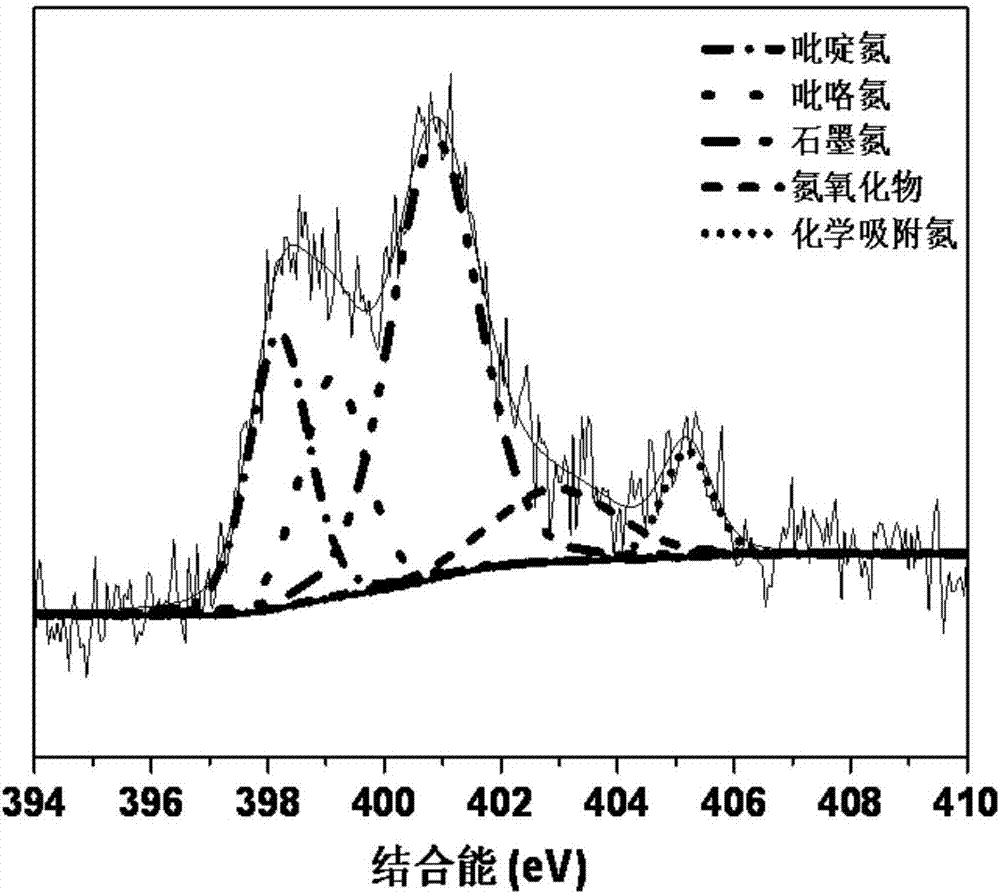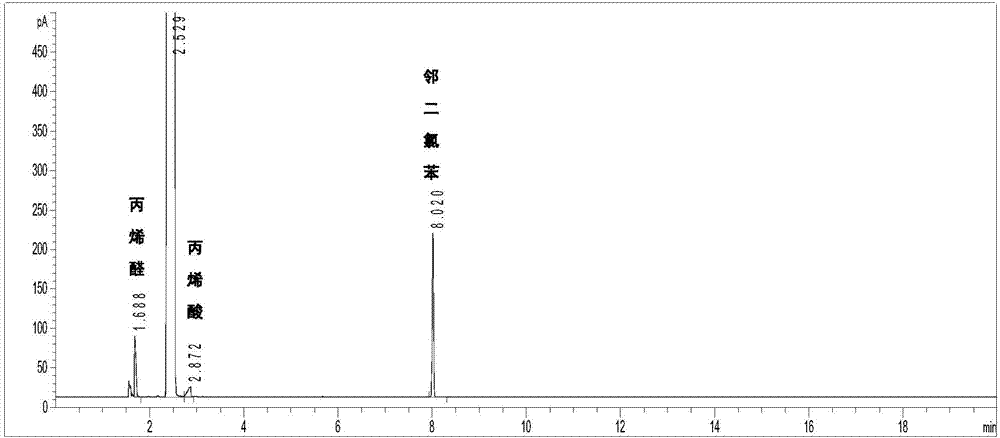Method for preparing acrylic acid by carrying out liquid phase catalytic oxidation on acrylic aldehyde
A technology of catalytic oxidation and acrolein liquid, applied in chemical instruments and methods, preparation of organic compounds, preparation of carboxylate, etc., can solve the problems of strong exothermic reaction system, catalyst deactivation reaction cost, increase, etc., and achieve stability Good performance, improved economic feasibility, and simple operation process
- Summary
- Abstract
- Description
- Claims
- Application Information
AI Technical Summary
Problems solved by technology
Method used
Image
Examples
Embodiment 1~5
[0027] Add 30mL of 1,2-dichloroethane, 2.6g of o-dichlorobenzene (internal standard), 2.69g of acrolein and 100mg of nitrogen-doped carbon nanotubes (N content is 4.34at%) into the autoclave and stir Heating to the temperature shown in Table 1, feeding oxygen, starting timing (t=0), and maintaining its pressure during the reaction is 1MPa; after reacting for 4h, stop timing, the reactor is cooled to room temperature, and filter the liquid solid phase mixture to obtain a solid catalyst and a liquid phase mixture containing unreacted reactants and reaction products.
Embodiment 2
[0028] The gas chromatogram of the liquid phase mixture containing unreacted reactant and reaction product after the reaction of embodiment 2 is as follows image 3 shown. Depend on image 3 It can be seen that the retention times t of acrolein, acrylic acid and the internal standard o-dichlorobenzene are 1.688, 2.872 and 8.020 min respectively, and the conversion rate of acrolein and the selectivity of acrylic acid are calculated by the standard curves of acrolein and acrylic acid.
[0029] The liquid phase mixture containing unreacted reactants and reaction products was detected and analyzed by gas chromatography (GC), and the GC detection results are shown in Table 1 (the influence of reaction temperature on the liquid phase oxidation reaction of acrolein).
[0030] The GC detection result of table 1 embodiment 1~5
[0031]
[0032] It can be seen from Table 1 that increasing the temperature is beneficial to increase the conversion rate of acrolein, but when the temper...
Embodiment 6~12
[0034] Add 30mL of 1,2-dichloroethane, 2.6g of o-dichlorobenzene (internal standard), 2.69g of acrolein and 100mg of nitrogen-doped carbon nanotubes (the N content is 4.34at%) into the autoclave, stir and heat To 85°C, feed oxygen, start timing (t=0), and maintain its pressure during the reaction to be 1MPa; after reacting to the time shown in Table 2, stop timing, cool the reactor to room temperature, filter the liquid solid phase mixture to obtain a solid catalyst and a liquid phase mixture containing unreacted reactants and reaction products.
[0035] The liquid phase mixture containing unreacted reactants and reaction products was detected and analyzed by gas chromatography (GC), and the GC detection results are shown in Table 2 (the influence of reaction time on the liquid phase oxidation reaction of acrolein).
[0036] The GC detection result of table 2 embodiment 6~12
[0037]
[0038] Analysis of the data in Table 2 shows that the conversion rate of acrolein increa...
PUM
 Login to View More
Login to View More Abstract
Description
Claims
Application Information
 Login to View More
Login to View More - R&D
- Intellectual Property
- Life Sciences
- Materials
- Tech Scout
- Unparalleled Data Quality
- Higher Quality Content
- 60% Fewer Hallucinations
Browse by: Latest US Patents, China's latest patents, Technical Efficacy Thesaurus, Application Domain, Technology Topic, Popular Technical Reports.
© 2025 PatSnap. All rights reserved.Legal|Privacy policy|Modern Slavery Act Transparency Statement|Sitemap|About US| Contact US: help@patsnap.com



